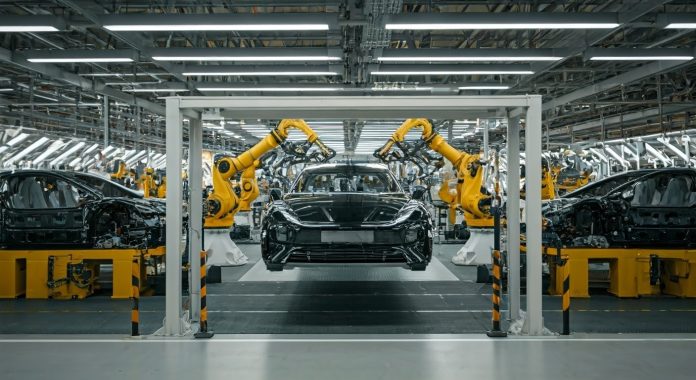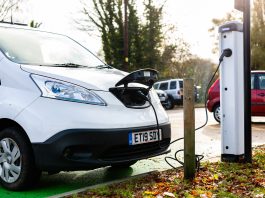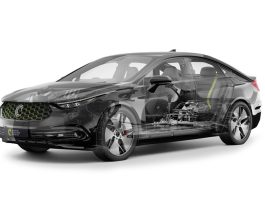The transition to electric vehicle (EV) production in the US has demanded a significantly larger workforce than previously anticipated, challenging earlier predictions that EV manufacturing would reduce jobs.
New research from the University of Michigan highlights the surprising need for more assembly workers in plants producing EVs compared to traditional internal combustion engine (ICE) vehicles, with some plants requiring up to ten times more labour during the initial phases of the transition.
Increased workforce demand in EV production
The University of Michigan’s research analysed data from several US auto plants that have switched to producing battery electric vehicles (BEVs).
Contrary to widespread expectations, the study found that instead of decreasing, assembly jobs have surged, particularly in the early stages of EV production.
In one specific plant that has been producing EVs for over a decade, the number of workers needed per vehicle remains three times higher than for ICE vehicle production.
This finding is particularly striking given the simpler mechanical structure of EVs, which generally require fewer parts and less complex powertrains compared to their gas-powered counterparts.
Defying industry predictions
Earlier forecasts predicted significant job losses in the automotive industry due to the rise of EVs. Analysts had estimated that up to 30% to 40% of manufacturing jobs—amounting to more than 200,000 positions—could be lost as companies transitioned to electric models.
This assumption was largely based on the idea that EVs, which have roughly 100 fewer components and lack complex systems like transmissions and exhausts, would require less assembly labour. However, the study found that these projections have not materialised.
“What we’re seeing, with the data that’s available, is that the loss of employment predicted for EVs is not happening,” said Anna Stefanopoulou, the William Clay Ford Professor of Technology and senior author of the study.
She emphasised that the research sheds light on the unexpected labour demands of EV production, which has been largely overlooked in previous industry discussions.
Factors driving higher labour needs
Several key factors are contributing to the unexpected increase in labour demand during the transition to EV production:
- Investment in new technologies: As automakers shift to EV manufacturing, they are investing heavily in developing new technologies. The initial stages of deploying these technologies often require a larger workforce to manage the learning curve and refine production processes.
- Higher vehicle complexity: Many companies starting EV production focus on premium models with advanced features, requiring more labour to ensure quality assembly. This contrasts with the mass-market, simpler models that typically follow in later years.
- Vertical integration: Some manufacturers are centralising operations to reduce outsourcing costs, a process known as vertical integration. By consolidating more production steps in-house, companies may increase their labour needs.
Case studies of EV plant transitions
The research team examined three major auto plants that transitioned from producing ICE vehicles to EVs: Tesla’s Fremont plant in California, Rivian’s plant in Normal, Illinois, and General Motors’ plant in Orion Township, Michigan.
These facilities provide valuable data on how workforce demands have evolved over time. Tesla’s Fremont factory, which has been producing EVs for over a decade, offers the most extensive data.
Gabriel Ehrlich, director of U-M’s Research Seminar in Quantitative Economics, noted that while labour efficiency at the Fremont plant has improved over time, the rate of improvement has been slower than expected.
“The plant has been operating for ten years now, and they’ve obviously been able to improve labour efficiency,” he said. “But the pace of improvement indicates that it can take up to 15 years for a plant to reach parity with its ICE predecessor.
“It’s going to be a slow process, one that gives communities, companies and workers time to adjust.”
Impact on parts manufacturing jobs
While the study confirms that assembly jobs are on the rise, the outlook for parts manufacturing jobs remains uncertain.
The number of jobs in this area will largely depend on the location of battery cell manufacturing, which is a critical component in EVs.
As more automakers invest in domestic battery production, this could offset potential job losses in other areas of auto manufacturing.
Andrew Weng, a research fellow in mechanical engineering at U-M and co-author of the study, cautioned that while assembly jobs are increasing, the future of parts manufacturing jobs is still uncertain.
“The jury is still out in terms of parts manufacturing jobs,” Weng said, noting that much depends on the geographical distribution of battery cell production.
The findings suggest that the transition to EV production will be a gradual process, allowing time for adjustment across various sectors of the industry.
While EV production may require more labour in the short term, efficiency gains are expected over time as manufacturers refine their processes and scale up production.
For now, however, the study provides a much-needed perspective on how the shift to EVs is shaping employment in the auto industry.









